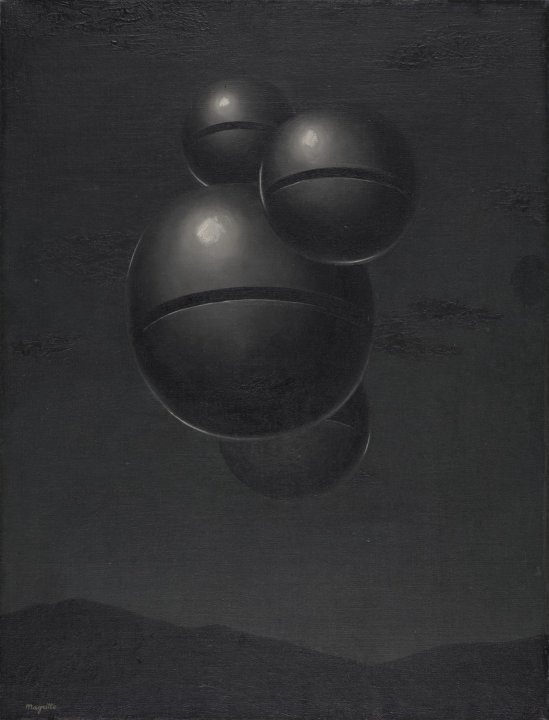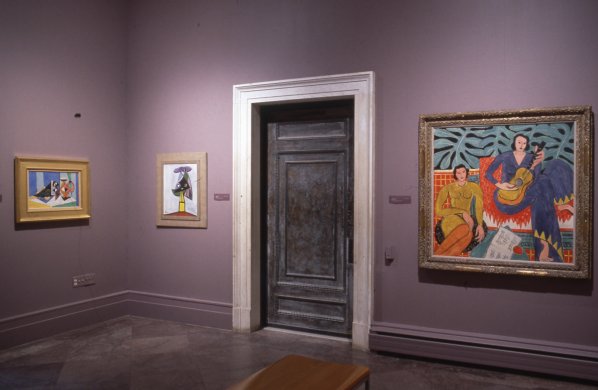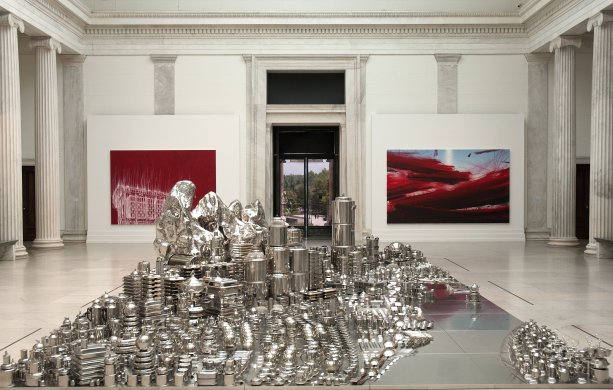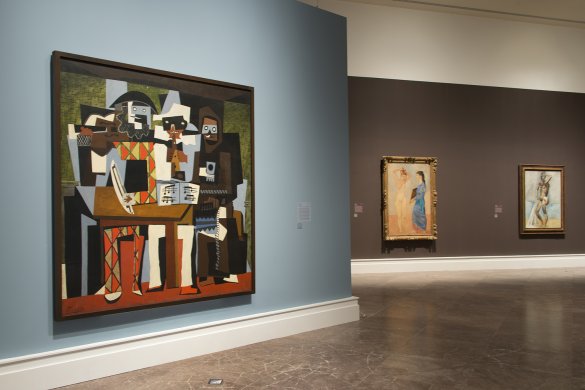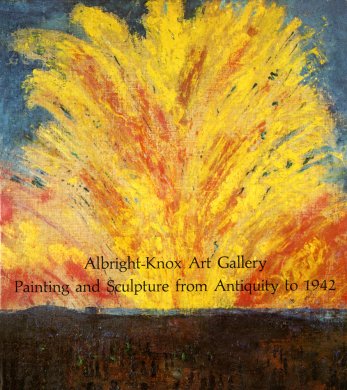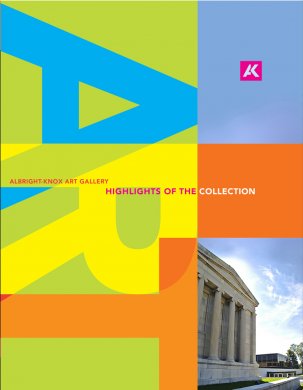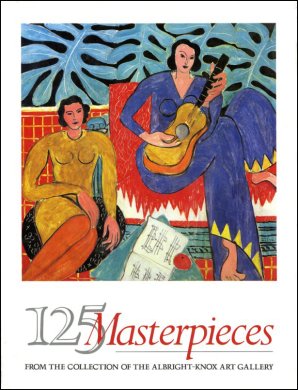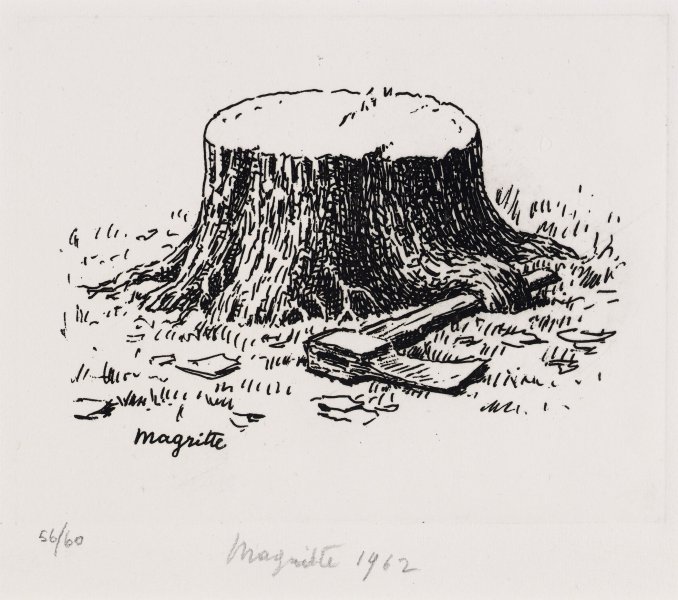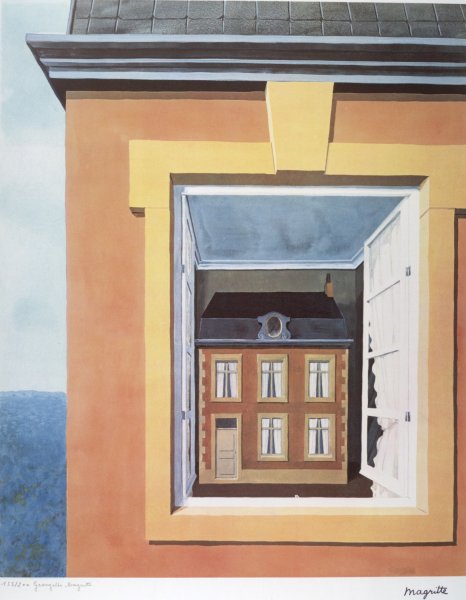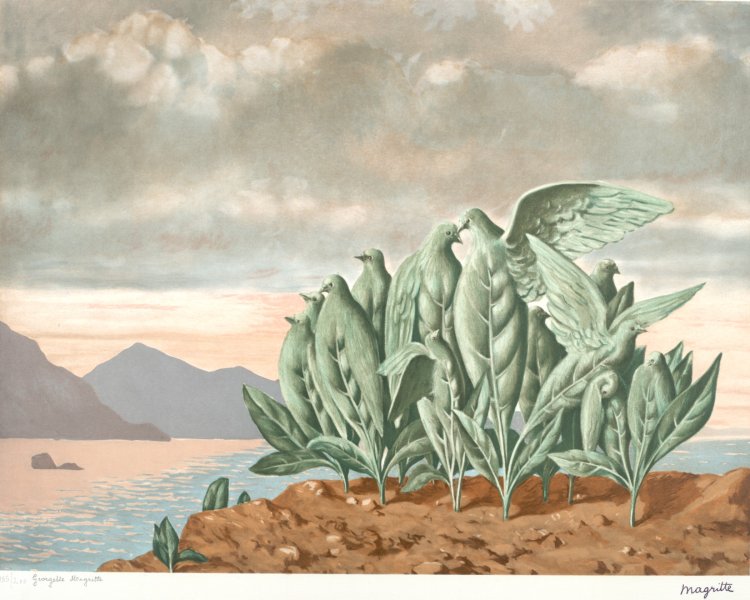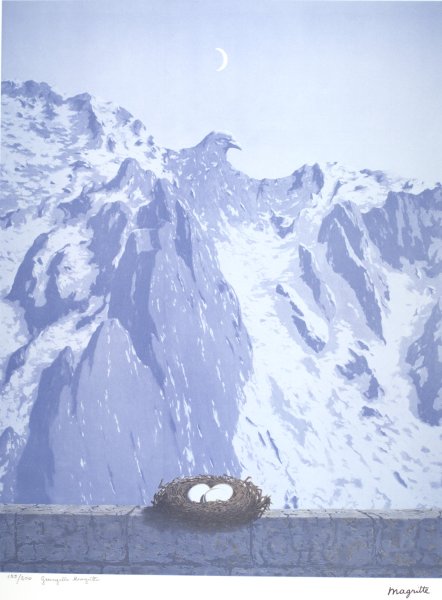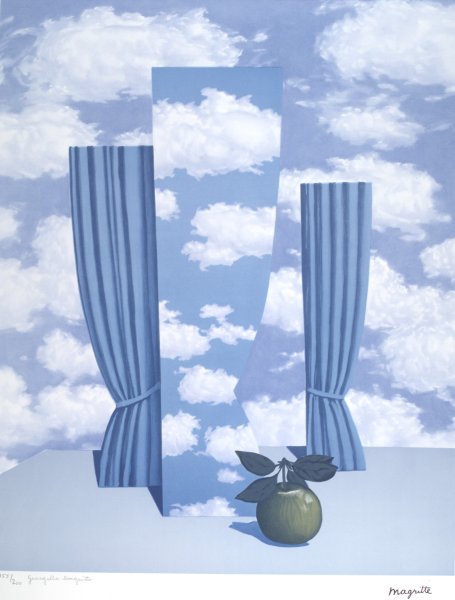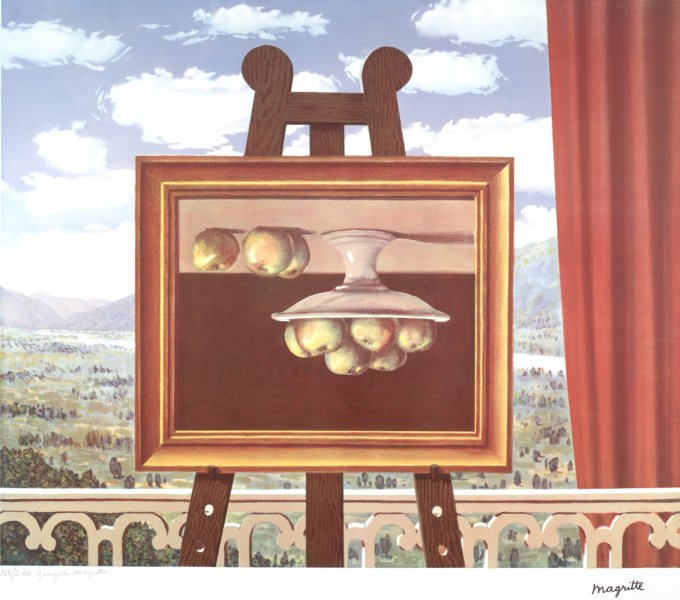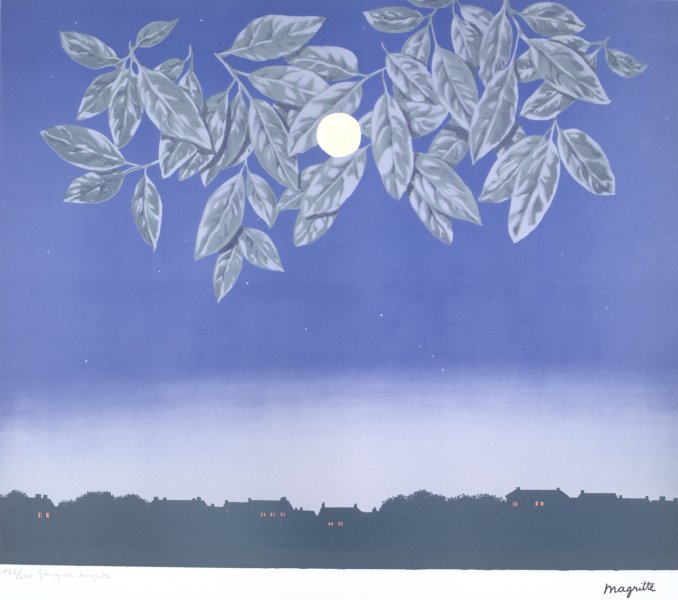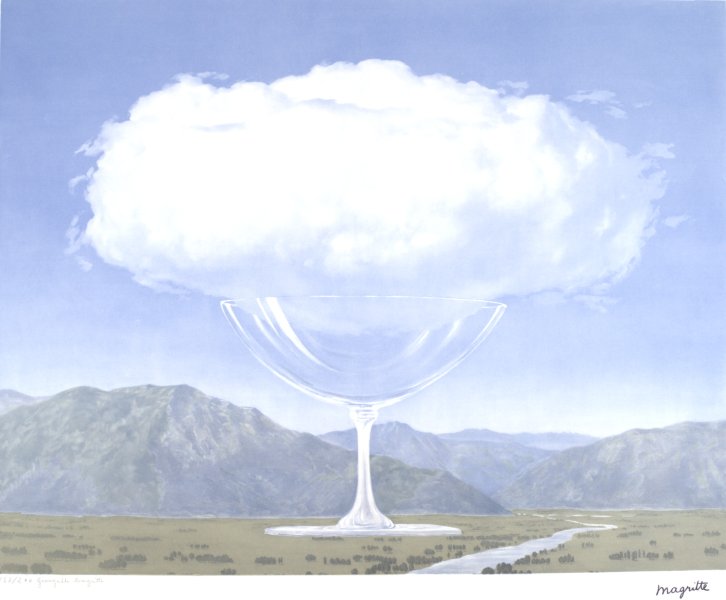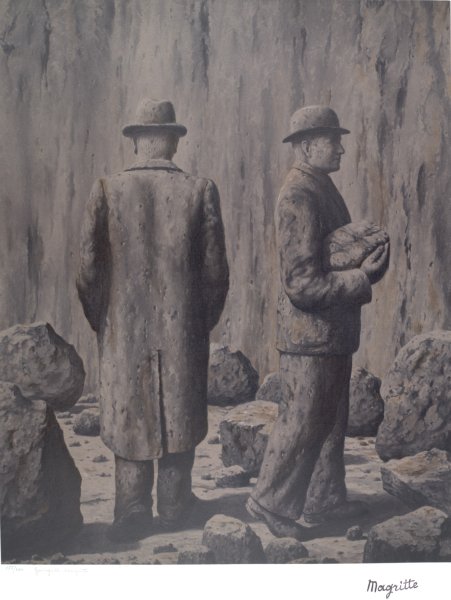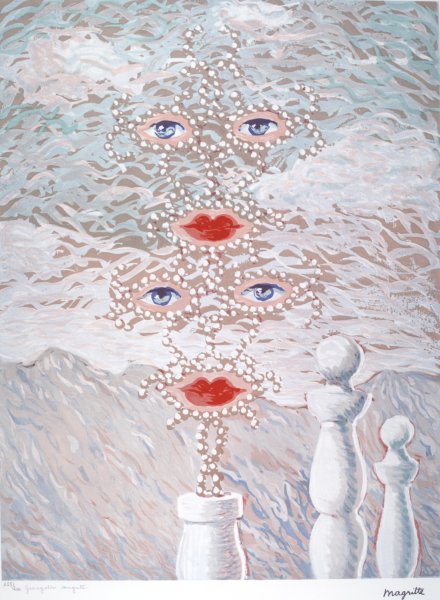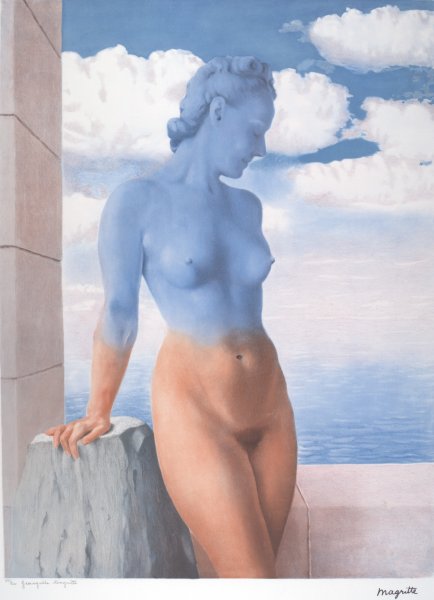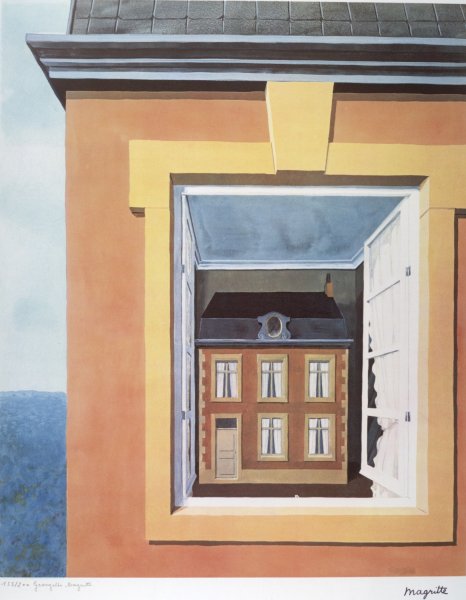René Magritte
Belgian, 1898-1967
La voix des airs (The Voice of Space), 1928
Artwork Details
Currently on View
Collection Highlight
Materials
oil on canvas
Measurements
support: 25 1/2 x 19 1/2 inches (64.77 x 49.53 cm); framed: 33 x 27 x 3 inches (83.82 x 68.58 x 7.62 cm)
Collection Buffalo AKG Art Museum
Credit
Albert H. Tracy Fund, by exchange, and George B. and Jenny R. Mathews Fund, 1976
Accession ID
1976:13
Surrealist René Magritte is best known for creating unusual compositions that are wonderfully strange in their illustrative simplicity. The imagery in The Voice of Space is reminiscent of the region of Belgium where Magritte grew up—the Pays Noir (Black Country). The painting’s backdrop references the slopes of iron slag that dotted the landscape, and the sky above the area was often gray. The floating forms were inspired by the bells hung on horses’ collars, the sound of which Magritte remembered reverberating through the night air over great distances. Slits in the spheres reflect the artist’s obsession with concealment and the mystery of human experience, which, for him, could not be fully explained. Magritte described his paintings as “visible images which conceal nothing; they evoke mystery, and indeed, when one sees one of my pictures, one asks oneself this simple question, ’What does that mean?’ It does not mean anything, because mystery means nothing, it is unknowable.”
